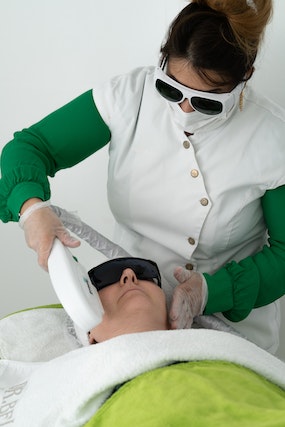In the never-ending quest for smooth, hair-free skin, laser hair removal has emerged as a popular and effective solution. Say goodbye to razors, waxing, and endless plucking, because today, we’re diving deep into the world of laser hair removal. In this comprehensive guide, we’ll explore everything you need to know about this innovative and life-changing beauty procedure.
Chapter 1: The Science Behind Laser Hair Removal
Before we delve into the nitty-gritty details, let’s understand how laser hair removal works. At its core, laser hair removal is a medical procedure that uses a concentrated beam of light (a laser) to target and destroy hair follicles. The process is based on the principle of selective photothermolysis, where the laser’s energy is absorbed by the melanin (pigment) in the hair follicles, while sparing the surrounding skin.
Chapter 2: Who Can Benefit from Laser Hair Removal?
Laser hair removal is a versatile solution suitable for people of various skin types and tones. While once primarily effective for individuals with fair skin and dark hair, advancements in laser technology have expanded its applicability. Today, it can effectively treat a wide range of skin and hair colors, but results may vary depending on individual factors.
Chapter 3: Choosing the Right Laser for You
There are various types of lasers used in hair removal, such as diode, alexandrite, and Nd:YAG lasers. The choice of laser depends on your skin type, hair color, and the area being treated. It’s crucial to consult with a qualified practitioner to determine the most suitable laser for your specific needs.
Chapter 4: The Laser Hair Removal Process
Before undergoing laser hair removal, you’ll need to prepare by avoiding sun exposure and certain hair removal methods. The procedure itself typically involves a series of sessions, spaced several weeks apart, to target hair in different growth phases. During each session, the laser technician will use a handheld device to apply the laser energy to the treatment area.
Chapter 5: What to Expect During and After Treatment
Laser hair removal is generally well-tolerated, but you might experience some discomfort, often described as a mild snapping sensation. Fortunately, most people find the discomfort manageable, and some lasers come equipped with cooling mechanisms to ease the sensation. After each session, you may notice some redness and swelling, but these side effects are usually temporary.
Chapter 6: Long-Term Benefits and Results
One of the biggest advantages of laser hair removal is the long-lasting results. After completing the recommended sessions, many individuals experience a significant reduction in hair growth, with some achieving near-permanent hair removal. Say goodbye to the hassle of frequent shaving or waxing!
Chapter 7: Safety and Risks
Like any medical procedure, laser hair removal carries some risks, including skin irritation, pigment changes, and, in rare cases, scarring. However, by choosing a qualified practitioner and following their post-treatment care instructions, you can minimize these risks.
Chapter 8: Cost Considerations
The cost of laser hair removal varies depending on factors like the treatment area, the number of sessions required, and your geographic location. While it may seem like a significant upfront investment, many people find it more cost-effective in the long run when compared to the ongoing expense of traditional hair removal methods.
Chapter 9: Choosing a Laser Hair Removal Provider
Selecting a reputable and experienced laser hair removal provider is crucial for achieving safe and effective results. Look for practitioners who are licensed and certified in laser treatments, and don’t hesitate to ask questions and request before-and-after photos to assess their expertise.
Chapter 10: Maintaining Your Laser Hair-Free Skin
After completing your laser hair removal sessions, you may require occasional touch-up treatments to maintain your smooth, hair-free skin. These touch-ups are typically less frequent than the initial sessions and serve to address any remaining hair growth.
